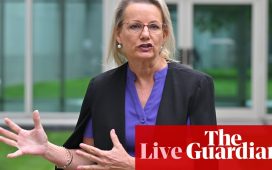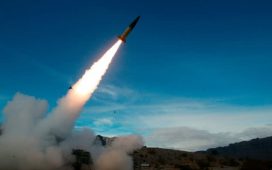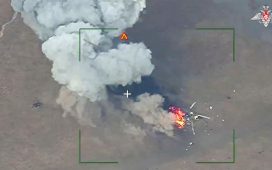If Vladimir Putin’s decision to deploy tens of thousands of troops to Ukraine’s border in the past few weeks was driven primarily by a desire to get the west’s attention, he did not have to wait too long for his reward.
Hours after his defence minister on Tuesday admitted Russia had mobilised two armies and three paratrooper divisions to positions close to the conflict-wracked frontier, US President Joe Biden phoned the Kremlin with an offer of a bilateral summit: a long sought-after prize for Putin who craves a seat at the world’s highest negotiating table.
By then, Moscow was only confirming what satellite imagery, social media footage and increasingly frantic statements from Kyiv had indicated: Russia had massed more troops on its western border than at any time since its 2014 invasion of Crimea.
Those 50,000 extra soldiers, scores of tanks and other heavy weaponry spooked Kyiv and other European powers, and sparked a hurried response from Nato and the US amid fears over a potential outbreak of fighting between the two countries.
But while Russian officials have warned of a conflict that would “end” Ukraine, so far only a barrage of warlike rhetoric has crossed the border, with Russia’s troops merely lurking with intent.
That has led experts to conclude Moscow’s intention was to merely scare its neighbours, test the level of support for Ukraine among Biden’s new administration, and remind the White House of Russia’s leverage in European security.
“Russia sent a clear signal that in the current context of the deterioration of US-Russia relations, Moscow is not prepared to make any more concessions regarding Ukraine,” said Ruslan Pukhov, director of the Centre for Analysis of Strategies and Technologies, a Russian defence think-tank. “The message was: we either stop where we are now, or we will move forward.”

Since Russia’s 2014 invasion and annexation of Ukraine’s Crimea peninsula, pro-Russian separatists have fought against Ukrainian forces for control of Donbas, the Ukrainian region on the border with Russia, killing more than 14,000.
Kyiv accuses Moscow of stoking the conflict with weapons, military support and irregular troops. Moscow denies direct involvement but says it has a duty to protect the Russian-speaking population who live there.
Both sides accuse the other of failing to adhere to the Minsk agreements, a 2015 peace deal, and of constant provocations across the line of contact. Many see frustration at Kyiv as the major factor behind Moscow’s decision to remind its neighbour of its significantly larger military might.
“With the current state of Russia-Ukrainian relations, we have no other tools to influence Kyiv except the threat of force and the use of force. The other diplomatic tools are really limited,” said Pukhov, who is also a member of the Russian defence ministry’s public council.
“Russia does it not because it is cruel by nature, but because it is the only way to exert any pressure or influence on them,” he added.
Sergei Shoigu, Russia’s defence minister, on Tuesday said the troops had been deployed as part of “appropriate measures” in response to threats from Nato, which he said was preparing to move 40,000 troops and 15,000 weapons to the Russian border.
The Russian troops were conducting exercises “at present”, he said, but “show full readiness and ability to fulfil tasks to ensure the country’s military security”.
Dmitri Trenin, head of the Moscow Carnegie Center, suggested that western support for Kyiv had increased the stakes in the Russia-Ukraine conflict by making it increasingly the focal point of broader tension between Moscow and Nato, and thus forcing the Kremlin to take a belligerent stance.
“Thanks to the uncritical and automatic support that Ukraine invariably gets from the US and its allies, Kyiv has the ability to put Russia in what Germans and chess players call Zugzwang,” he said. “Any move a player can or has to take only worsens the player’s position.”
In a move seen as an initiative to calm the situation, Biden on Monday used a telephone call with Putin to “propose a summit meeting in a third country in the coming months”, according to the White House readout of the conversation.
In the call, Biden also “voiced our concerns over the sudden Russian military build-up” and “emphasised the United State’s unwavering commitment to Ukraine’s sovereignty and territorial integrity”.
The summit format will also please the Kremlin by effectively cutting Kyiv out of any negotiations, and allow Putin to project the image of two global superpowers deciding the future fate of the conflict.
But a long-term settlement appears unattainable at present, with both sides failing to comply with the terms of the Minsk agreement and wary that any moves to de-escalate could be seized on by the other as an opportunity to extract more leverage.
Russian and Nato warships have been dispatched to the Black Sea and the western alliance is preparing a number of large military exercises in eastern European states this summer, a move likely to keep tensions simmering.
“Instead of making Russia behave, the west is adding to the dynamic which might ultimately lead to collision,” said Trenin. “There will be no second coming of Mikhail Gorbachev.”
“Let’s face it: regional war in Europe is again thought of as a possibility on both sides, and this should not make anyone happy. Even in the US, because such a war will not be limited to the Old Continent,” he added. “Fasten your seat belts.”








